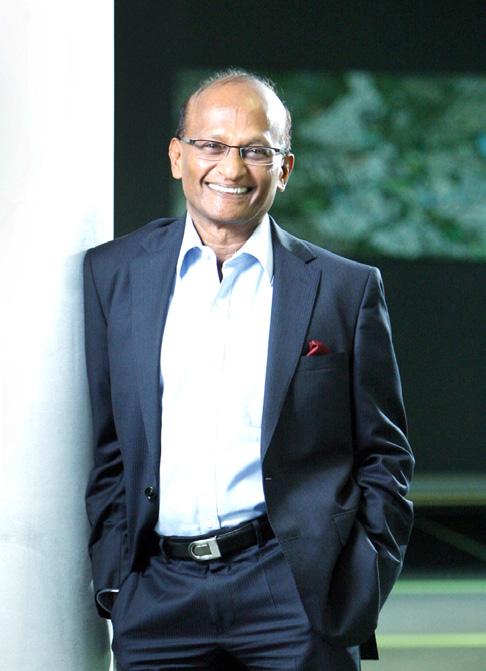
16 minute read
BUILDING CITIES AND COMMUNITIES
from 2019-06 Sydney (2)
by Indian Link
Professor
Mahalingam Sinnathamby, AM
In the early nineties, an enterprising property developer purchased 2860 hectares of bushland near Brisbane that had been beset by planning problems. He set about transforming it into Australia’s largest fully master-planned city, the only other since Canberra. The multi-award winning city is projected to have a population of 138,000 by 2030.
Lobbying various governmental departments over the last three decades to make this vision a reality, Greater Springfield is Malaysia-born and UNSW-trained civil engineer, MahalingamSinnathamby’s dream come true. As a major economic driver, it is also a vision of Australia’s urban future, boasting combined health, education, technology and transport precincts.
Former Prime Minister Malcolm Turnbull rightly described it as a national and nation building project.
“This is not my recognition alone. It has been a twenty six-year journey with eleven schools, three thousand teachers and forty one thousand individuals. When it went to the parliament for approval, eighty-nine members voted unanimously for it. The credit goes to every single person along the way who helped to achieve this vision,” Sinnathamby, who will turn eighty this year, told Indian Link.
As Chairman of the Springfield City Group, he has overseen the single largest planned city built by individuals. The project was awarded World’s Best Master Planned Community by International Real Estate Federation (FIABCI) and Australia’s Best Master Planned Community by Urban Development Institute of Australia. It also won Urban Development Institute of Australia’s National President’s Award as well as Property Council of Australia’s Best Master Planned Community besides numerous state level recognitions.
By creating a master-planned community where people can live, learn, work and play in a city, while fully supported by high quality infrastructure, commercially viable and sustainable development, his goal is to enrich society and make a difference at an individual level.
Outlining the substantial legacy he has helped shape, Sinnathambysaid with great humility,“I owe it to my wife, my business partner and our families. If anything needs recognition, it is the breadth of opportunities this great country offers. With 1.8% of India’s population spread across a country that is two and a half times bigger, Australians have unlimited natural resources, beautiful weather and a stable democratic system, where everyone is equal. What else can we ask for? Seize the opportunity, rise up and aspire for better.”
Despite very humble beginnings, his relentless work ethic and indomitable resilience have seen Sinnathamby stave off failures to become one of the wealthiest people in Australia. A recent publication Stop Not Till Goal Is Reached unpacks his philosophy in life, drawing inspiration from the legendary Swami Vivekanada. He values education above anything else, reiterating its importance at every occasion. “Education is the currency of the future. It is one thing that can be cashed anywhere and at any time. No one can take it away from you.”
As patron of the Singapore Business Council, former president of Australian Malaysia Business Council and former member, Australia India Business Council, he has lent his business acumen to support emerging entrepreneurs.
He is also a patron of the Federation of Indian Communities of Queensland and Global Organisation of People of Indian Origin (Queensland branch).
Inspired by the philosophy of Sri Ramakrishna and Mahatma Gandhi, he believes in giving. Philanthropy has been a big part of his life, be it to his alma mater, where a number of equity scholarships have been established, or to community groups and cultural organisations. He is a patron of the Vedanta Centre Sydney and a founding patron of its Brisbane chapter.
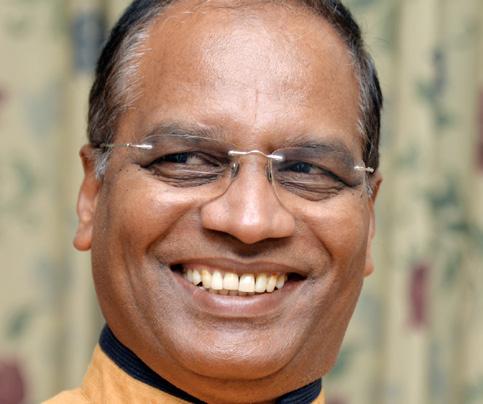
Exuding positivity at all times, Sinnathamby is an inspirational speaker who believes life’s challenges make one’s destiny. Always emulating simplicity, he is a firm believer that adversity and hardship have ingrained mental toughness in him.
Prior to the Order of Australia recognition, has been conferred with many accolades, including an honorary doctorate from the University of Southern Queensland, Centenary Medal for contribution to Regional Development; 2003 Ernst and Young Master Entrepreneur of the Year (Northern Region), Paul Harris Fellowship from Rotary International, Australian Institute of Management Medal for Management Innovation and the GOPIO International Renowned Entrepreneur Excellence Award.
Usha Ramanujam Arvind
of the Canberra Interfaith Forum, thus not only contributing to his Hindu faith, but making a mark among people of other faiths too. As Chair of the Hindu Mandir, he has successfully lobbied the ACT Government for a larger temple and is in the process of fund-raising for this project.
In addition, Dr Nadimpalli has also been active in the International Mother Language Movement. Cricket, his other love, continues to feature in his life in Australia, such as in organising multicultural cricket tournaments.
What would he say is his proudest achievement?
“I would say, the introduction of the Art of Living Foundation’s PrisonSmart program for the rehabilitation of prisoners in Canberra. My motto is ‘Serving for Empowerment’, and this is what I really want to do.”
He is grateful to his wife Lakshmi, who supports him fully in all his activities. He has two sons and is soon to be a grandfather.
Talking about his OAM, Dr Krihna chose characteristically to downplay it: I am happy, he said, sounding content.
True humility, one could not help thinking.
Then he said, “It actually inspires me to do more. I have decided to retire and devote my life to community service. First there is the temple to build. But then, my dream is to have Wellness Centres across Australia that deal with mental health issues, cancer and other terminal illnesses, and drug and alcohol addiction. I would like to see a drug-free Australia.”
Vinaya
Rai



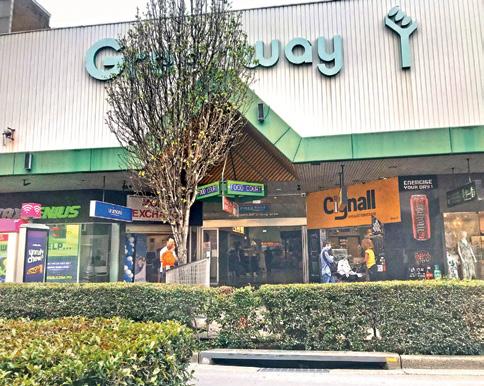
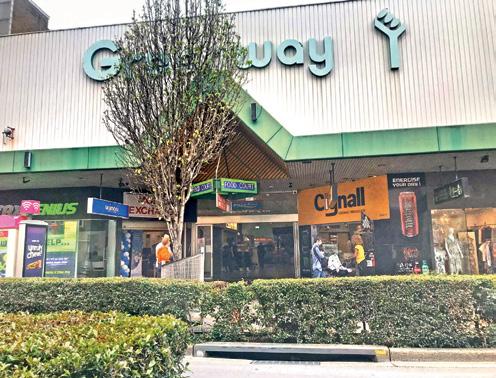

India may have witnessed worst-ever summer
India may have experienced its worst-ever summer this year as temperature levels in several cities remained in the severe category for long periods.
The national capital saw mercury tip the 45 degree Celsius mark for many days in the past two weeks touching 48 degree Celsius one day to make it the "hottest ever” day in June.
Churu and Sri Ganganagar in Rajasthan saw maximum temperature hovering around 50 degree Celsius in June.
Chandrapur in Maharashtra, Banda in UP and Khargone in MP also experienced a harsh spell of heatwave conditions.
Allahabad registered 48.9 degree Celsius breaking its own 40-year-old record.
A heat wave occurs when temperature remains at 45 degrees Celsius and above for two consecutive days. When the temperature touches 47 degrees, it is marked as "severe."
There have been frequent heat waves over the last few years.
Since 2004, India has seen 11 of the 15 warmest years. Last year was the sixth warmest since 1901, when weather records began to be preserved in the country.
In June, 11 of the 15 hottest places in the world were located in India, the rest were in neighbouring Pakistan, a weather monitoring website reported.
Experts say this is a part of climate change. Environmental activists have suggested that India put in place a plan to tackle heat waves that are costing hundreds of lives every year.
Since 2010, more than 6000 people have died in heat waves in the country, the Lok Sabha was told last year.
Four people died this month due to heat stroke – they were on board the Kerala Express as it passed through Jhansi.
3 in 4 Indians use more than 1 device simultaneously: Study
Three in four adult consumers in India constantly use more than one device simultaneously and spend almost 90 per cent of their workday interacting with devices, an Adobe study found this month.
Switching screens is common in India with 50 per cent of consumers starting an activity on mobile and then switching to a computer, said the study titled "2019 Mobile Marketing Research - India Market".
Switching is most common among male millennials, the research showed.
When faced with the proposition of having their smartphone taken away for two weeks, 39 per cent said it would be a major hassle, while one-third claimed they could not live without their smartphones.
This reaction was more pronounced among millennial consumers, said the study which showed that Indian consumers have developed an increased affinity for smartphones when it comes to all online activities as compared with computers.
Video calling (88 per cent), checking social media (85 per cent) and texting (89 per cent) are among the key activities which Indian consumers prefer to use their mobile devices for as compared to computers.
Smartphones have also emerged as the most preferred medium for all shopping activities with 89 per cent of consumers currently being able to do all the retail activities they want on mobile, showed the findings based on a survey of 1,000 adult consumers in India.
A vast majority of consumers (83 per cent) have a strong preference for using mobile apps over mobile browsers while interacting with a company.
The study revealed that more than half of adults surveyed regularly use voice commands.
"The rapid proliferation of advanced technologies and their increased usage on mobile devices, points to potential new areas for marketers to engage with consumers," said Sunder Madakshira, Head, Marketing, Adobe India.
"Considering the fast consumer adoption of voice tech, we expect to start seeing more brands experimenting with immersive ways of customer engagement over the next few years," Sunder added.
AI, machine learning help shrimp, vegetable farmers reap good harvest
Artificial Intelligence (AI) and machine learning have entered aquaculture and agriculture farms in some states benefitting the farmers in cutting down their labour and the uncertainties of trial and error methods.
Thanks to these technologies used by companies like the Chennai-based Coastal Aquaculture Research Institute (CARI) and
Aibono Smart Farming Pvt Ltd, Bengaluru, shrimp and vegetable farmers are able to increase their yield, cut their costs and have better market access.
V. Geetha, who practices aquaculture in Andhra Pradesh, told IANS: "Before signing up for CARI's 'Farm MOJO' - an AI appenabled farm advisor tool - we used to jot down the critical data in a notebook and act on it. But we wouldn't know how much to feed the shrimp. There would either be over or under feeding."
"Apart from risking shrimp health and increasing our feed costs, overfeeding also increases the water cost because quality of water recedes faster than it normally does," said Arul Prakash, an engineering graduate now into aquaculture business in Chidambaram in Tamil Nadu.
Since he tied up with CARI six months back, Prakash said, the company takes care of water quality tests in his pond and all the required data is available on his mobile with suggested action to be taken.
The tool also helps in predicting the chances of a disease outbreak in the client farm based on the data available from other ponds. Currently the company operates 750 ponds spread over Tamil Nadu, Andhra Pradesh, Gujarat and Odisha, and hopes to expand to 2,500 ponds in the next year.
In agriculture, Bengaluru-based Aibono Smart Farming Pvt Ltd and its AI product are helping the farmers in Nilgiris district of Tamil Nadu to match the supply and demand of hill vegetables.
"In India, the land holdings by farmers are small. So, precision farming could be used only if the supply and demand are matched. The other problem is, good price realisation if the yield is good. Farmers do not have a foresight on what to produce and when," Vivek Rajkumar, Founder, told IANS.
Fruit and vegetables are a $250 billion market in India, far bigger than that of fast moving consumer goods. But there are no e-commerce players in this segment.
"Aibono is like a dairy cooperative. It assures farmers of buying every kilogram of their produce at a good price so that they can make money. The average land holding of the farmers in the network ranges between 0.5 to 1.5 acre," Rajkumar said.
"We collect about 2,000 data points like weather, soil tests, photographs etc. Open farm is like a factory without a roof. It is dynamic. But the farmer's activities are routine and predictable - agronomy has to be changed to dynamic mode," Rajkumar said.
Residents of a housing society cool off with a "rain dance" organised to beat the heat on a hot summer day in Greater Noida, outskirts of New Delhi, India, June 15, 2019. Many parts of India are experiencing extreme heat conditions.

With farmers seeing increasing yield but not commensurate increase in realisation, Aibono decided to look at the demand side and started to study the consumption pattern.
"At the retail end, people buy a fixed quantity of the vegetables. The buying pattern in predictable but it is the supply that varies," Rajkumar said.
"We signed up with retailers and hotels assuring them of supplies. For the farmers, we started calibrating issue of seeds so that the supplies could be assured at certain quantities at a specified time," Rajkumar said.
Aibono works with 500 farmers and has about 200 acres are under active cultivation. Rajkumar said: "We have 300 retailers in our network and next year the number is set to grow. We charge Re 1 per kg as fee for service to the farmers."
India's public Cloud services revenue to grow 24% in 2019
Public Cloud services revenue in India is projected to a total $2.4 billion in 2019 -- an increase of 24.3 per cent from 2018, a new report by Gartner said on 18 June.
The country ranks among the nine nations whose growth rate will be higher than the global average growth rate, third after China (33 per cent) and Indonesia (29 per cent).
"The shift from ‘cloud first' to a ‘cloud only' model is pushing organisations in India to increase their spending on public cloud services to advance their digital business initiatives," Sid Nag, Research Vice President at Gartner, said in a statement. "Disinvestments in new data centres are also one of the early signs of this move."
Meanwhile, aiming to tap newer growth opportunities, business Cloud software firm Infor has just announced a new India Business Unit (IBU) as a separate region that comprises India, Nepal, Bangladesh and Pakistan.
"India has long been a strategic market for Infor - one that is instrumental to the growth of our overall business. With an IPO in the cards, India and other regions need to fire on all cylinders," Charles Phillips, Chief Executive Officer, Infor, said in a statement.
"The new IBU is Infor's strategic response to the immense market opportunities afforded by digital technologies such as Cloud, mobility, artificial intelligence and IoT in accelerating innovation across public and private sectors in India," he added.
The northern Indian states of Kashmir and Himachal Pradesh are currently harvesting a bumper crop of cherries. Thousands of trees have been planted in the region since the mid2000s.
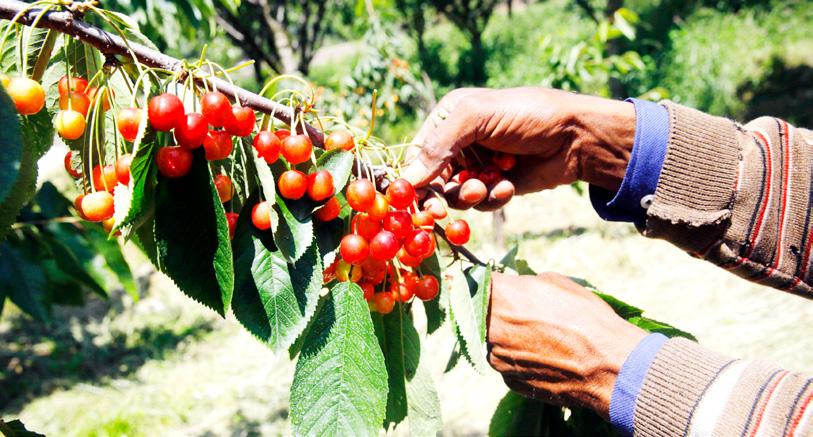
India is the company's top two largest locations in the world with over 3,000 people in the region.
Niu Neer coconut delivery app to serve coconut water
Niu Neer, India's first-ever tender coconut delivery service provider, is determined to offer India's beloved nariyal paani with the utmost convenience and consistency.
A classic yet contemporary favourite in India, Niu Neer proposes to put premium quality tender coconuts in the hands of the consumer, a couple of days from the time they are picked.
With services available in Mumbai and Chennai, NiuNeer is building its followers by the thousands with its diverse target audience. From households that traditionally drink the beverage every morning to discerning millennials adopting healthy lifestyles, the company not only aims to provide a service but to ensure a sustainable one as well.
Inspired by the vision to create a consumer revolution, Niu Neer dove into the source of the value chain, reducing numerous layers between the producer and consumer. This enables audiences to avail fresh, homedelivered produce, while simultaneously delivering a fair price to farmers.
"Our goal is not only to provide a seamless service but also to incentivise customers to be responsible to the environment. For every delivery we also collect every shell we sell. We make sure we recycle the shells the customers have returned and have created an innovative and seamless sustainability initiative with these units thereby reducing tons of solid waste to the city of Mumbai," Niu Neer Founder Deepak Ram said.
With business picking up, Niu Neer aims to expand to 5 cities across the next 18 months with Hyderabad, Bengaluru, Ahmedabad, Pune and Indore on the map.
Bhupen Khakhar’s painting on homosexuality breaks auction record
Two Men in Benares, a 1980s painting by Indian contemporary artist Bhupen Khakhar has set a new auction record for the painter by selling at a whopping $3.2 million.
The sale took place at the Sotheby’s auction house earlier this month. Going under the hammer was the ‘Coups de Coeur: The Guy and Helen Barbier Family Collection’, an offering of 29 artworks from one of the finest collections of 20th century Indian art in private hands.
When Khakhar (1934-2003) first unveiled
Two Men in Benares in Mumbai in 1986, he became the first Indian artist to freely disclose his sexual orientation through his work.
The painting shows two naked men embracing. It “is the most explicit of what the artist himself called his ‘efforts to come-out in the open’, and to create a new iconography of homosexual love”, Sotheby’s said on their website.
Widely considered among the artist’s best works, the painting later starred in Tate Modern’s 2016 ‘You Can’t Please All’ exhibition of Khakhar’s work, the first retrospective of an Indian artist to be held at the institution, according to Sotheby’s.
Other works of art at the auction included M.F. Husain’s Marathi Women (1950) that sold for $553,146; a rare figurative work by Ram Kumar, Untitled (Man and Woman Holding Hands) painted as a present for the artist’s wife in 1953, sold for $659,960.
The Anatomy of that Old Story (1970) from Rameshwar Broota’s ‘Ape’ series also sold for $537,887.
Ishrat Kanga, Head of Sales at the global auction house said, “These exceptional results are a fitting tribute to the pioneering spirit of Guy and Helen Barbier, who passionately sought out exceptional examples of Indian art at a time when few others thought to.They collected with a ‘coups de coeur’, acquiring works that they truly loved and with a real commitment to discovering and celebrating Indian art.”
Another sale saw Francis Newton Souza’s monumental Untitled painting being sold for $1.5 million. Described by the artist himself as a “probable masterpiece”, the painting tells the Old Testament story of Susanna and the Elders – which has been rendered artistically in Europe, most notably since the European Renaissance.
Indian jewels in focus at Christie's heritage auction Ever since its announcement, Christie's upcoming auction-- "Maharajas and Mughal Magnificence" - of Indian jewels, gemstones and decorative objects that span over 500 years, has been the talk of the art world and is expected to set some new records.
The "unprecedented group" of objects is from The Al Thani Collection of the royal family of Qatar. It is expected to see competitive bidding from across the globe.
According to Christie's, this collection is poised to be the most valuable auction of jewellery and jewelled objects. The current record is held by The Collection of Elizabeth Taylor, which totals $144 million.
Mughal emperor Shah Jahan's jade hilted dagger, the priceless jewels of the Nizams of Hyderabad, and a string of pearls belonging to Rajmata Gayatri Devi of Jaipur are among the 400 royal artefacts that would be auctioned on 19 June.
"The collection begins in Mughal India, the most important dynasty that ruled the country, which was famous for its emeralds, diamonds, sapphires, rubies, weapons and objects which are bejewelled beyond belief," the auction house said.
"(The sale) traces the history of jewellery from early Mughal India through the Maharajas and their collaborations with the world's most renowned jewellery houses to create some of the most exceptional pieces of jewellery ever made," it added.
The dagger of Shah Jahan, the fifth Mughal emperor who commissioned the Taj Mahal, is one of the sale highlights. A Mughal masterpiece, it features scrolling designs inlaid in gold at the top of the blade, and an inscription in ‘Nastaliq' script with a title the monarch had taken. It is estimated to fetch between $1,500,000 and $2,500,000.
The collection also has 'sarpechs' (turban ornaments), necklaces such as a diamond riviere necklace originally from the collection of the Nizam of Hyderabad, 33 Golconda diamonds (estimated between $1,200,000 and $1,500,000), and the Nizam of Hyderabad's diamond encrusted ceremonial sword, set with diamonds, rubies and emeralds ($1,000,000-$1,500,000).
Also featured are carved Mughal emeralds, jewelled boxes, the famed ‘Arcot II' diamond, presented to Queen Charlotte, wife of King George III, by Muhammad Ali Wallajah Nawab of Arcot, and the magnificent ‘Mirror of Paradise' D colour Internally Flawless
Golconda diamond.
An 18th century gold finial from the throne of Mysore ruler Tipu Sultan would go under the hammer as well. Set with diamonds, rubies and emeralds, the marble plinth with gilt metal fittings is one of eight finials that ornamented the gold throne of Tipu Sultan. Following his defeat at the hands of the British in the battle of Seringapatam (1799), the throne was dismantled and its components were dispersed.
The Patiala Ruby Choker created by Cartier in 1931 is an example of the fusion between India and the West. It was commissioned by Maharaja Bhupinder Singh of Patiala and is on sale. Another carved emerald brooch, and interchangeable 'Jigha' turban mounting depicts Lord Rama, Sita and Hanuman.
Another offering, the Enamel and Diamond Peacock Aigrette by Melleriodits Meller, was purchased by Maharaja Jagatjit Singh of Kapurthala in 1905 in Paris.
A natural pearl and diamond necklace of Rajmata Gayatri Devi, wife of Maharaja Sawai Man Singh II of Jaipur, is on offer as well.
Amitav Ghosh conferred with Jnanpith award
Renowned author Amitav Ghosh was awarded the 54th Jnanpith Award for his contribution to the enrichment of Indian literature this month.
The award consists of a shawl, citation, statue of goddess Saraswati and Rs 11 lakh.
Amitav Ghosh is the first English writer to get this prestigious award.
Speaking about the dominance of the English language which is a concern to writers who write in other languages, Ghosh said despite writing in English, he fully shares the concern, but pointed out that languages in India flow and mingle with each other. Ghosh’s books typically address issues of dislocation, migration, and movement.
A day after receiving the award, Ghosh launched his new book Gun Island - this time based on the global refugee crisis.
In 2004, his sixth novel, The Hungry Tide, which focused exclusively on the Sunderbans through issues like humanism and environmentalism, won the Hutch Crossword Book Award for Fiction. He won the Sahitya Akademi Award in 1990 for The Shadow Lines. His 2012 book River of Smoke was shortlisted for the Man Booker Asian Prize.
He received the Padma Shri in 2007. IANS
Viewfinder
BY VIKRAM
I love cityscapes and shooting at night, and Sydney during Vivid is absolutely spectacular - the contrast of the of Vivid can also be quite technically challenging for night photography. The constant play and movement of lights capture the colours. Camping out at Milsons Point/Kirribilli on a cold winter Shot on a Sony A7III, with
Viewfinder
the normal city just before the lights come on, to the moments just after, is like night and day. Yet taking pictures lights mean that you can't just set a long exposure time and wait - you have to time and set things just right to winter evening seems worth it though, when you capture a scene like this one. a Zeiss 24-70mm F4 lens.








